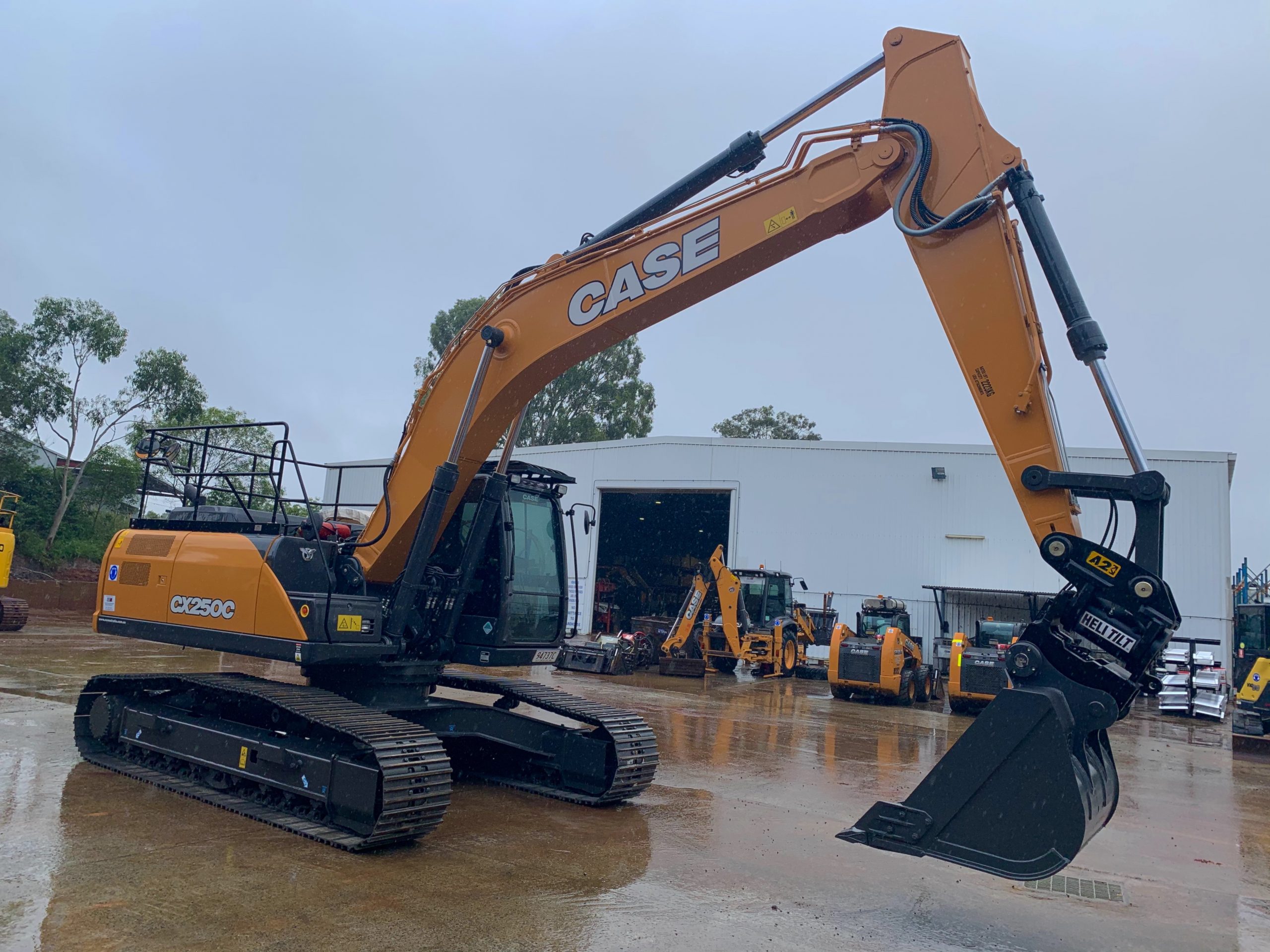
If you’re buying or renting an excavator, you must go armed with all the information you need. What kind of bucket will you need? Will you need attachments like a breaker or auger? Do you know if your excavator will be able to cope with the terrain on your site? There’s so much that goes into choosing the right excavator, so we’ve laid out this list of everything you’ll need to choose from what we’ve got on offer.
Skid Steer
A skid steer is smaller than a standard excavator. It has a boom and bucket facing away from the driver and wheels rather than a track. It is commonly used for site and pool clearing, debris removal, and residential work. Small, cramped sites are no problem for this excavator. Because of its wheels, a skid steer doesn’t do well around uneven, muddy, snowy or sandy terrain.
Mini Excavator

The mini excavator is just what it sounds like – a small excavator. However, it does have a few unique features of its own. One of these features is a reduced or nonexistent tail swing. This feature makes using a mini excavator in narrow, small, or cramped job sites more manageable. Mini excavators also typically have a narrower undercarriage that the operator can further compact when moving through a tight space like a gateway or door. A mini excavator also weighs less than a standard excavator, so it uses less fuel and is easier to transport between sites.
Dragline Excavator
The dragline excavator is one of the largest and most unique excavators on our list. A dragline excavator uses a hoist rope system with a dragline. This dragline can raise and lower the bucket or drag it towards the driver. The hoist and dragline system makes this excavator an ideal option for underwater excavation.
Hydraulic Shovel
Hydraulic shovels are the most powerful excavator type. Also known as the power shovel (what could sound cooler?), the hydraulic shovel is typically used for mining projects. However, the hydraulic shovel is excellent for any job that asks for heavy lifting or hauling large rocks and other objects. Just don’t expect precision.
Long Reach Excavator
As its name suggests, the long reach excavator is an excavator with an extensive arm and boom. This excavator’s extendable arm typically ranges from 40 to 100 feet, making it possible to work with construction zones 100 feet distant horizontally.
A long reach excavator is intended for jobs where the construction site or terrain stops the machine from getting close enough to the action. For example, a long reach excavator would work great in demolition projects over a river or lake.
Suction Excavator
The suction excavator, also known as the vacuum excavator, has a suction pipe that works like a giant, high-pressure vacuum. This excavator’s suction system works with a built-in water jet, sucks up debris and soil at speeds like 200 miles an hour! Suction excavators are best for jobs that need precise excavation. If utilised correctly, suction excavators can halve your chance of area damage!
Crawler Excavator
Then there’s the crawler excavator. Also known as the standard excavator, the crawler excavator is named for the two rotating tracks it runs on rather than wheels. Visually resembling a tank, the crawler excavator uses hydraulic power. Though much slower than a wheeled excavator, the crawler excavator’s tracked chassis, and chain wheel system makes this excavator a good match for projects involving rough, steep or muddy landscapes.
Wheeled Excavator
And lastly, the wheeled excavator. Though it resembles the standard or crawler excavator, the wheeled excavator gets around using its wheels rather than tracks. With little traction, this excavator is best used on concrete or asphalt. Though not suitable for slopes, hills, or soft soil, the wheeled excavator is one of the fastest options and easiest to manoeuvre for smooth, hard surfaces.
Excavator attachments and parts:
If this wasn’t enough, there’s also a range of attachments and tools that can better meet a job’s needs! These attachments can help you navigate cramped conditions or deal with particularly large or heavy objects.
Auger
Augers are a fast and efficient excavator attachment for drilling into the ground. Hydraulic circuits power the augers. They range from 4 to 50 inches in length, with the ability to dig up to 32 feet!
Bucket
The most common excavator attachment buckets have teeth-like edges and a perfect steel body for scooping and digging. The most common bucket is the ditching bucket, used for grading stones. The trenching bucket for digging trenches is another standard option.
Thumb
A thumb is used for objects too big for a bucket, for example, a slab of concrete or a tree stump. Thumbs are simple to attach and remove.
Breaker
Visually resembling a giant jackhammer, this is basically what a breaker is. Use it to hammer through concrete, rocks, or stone.

